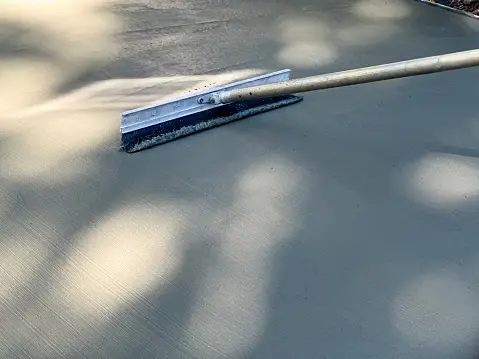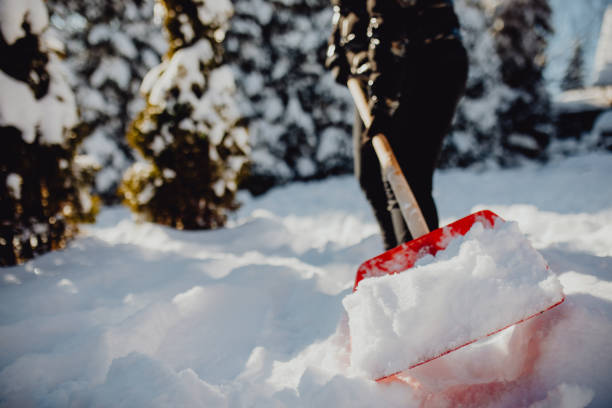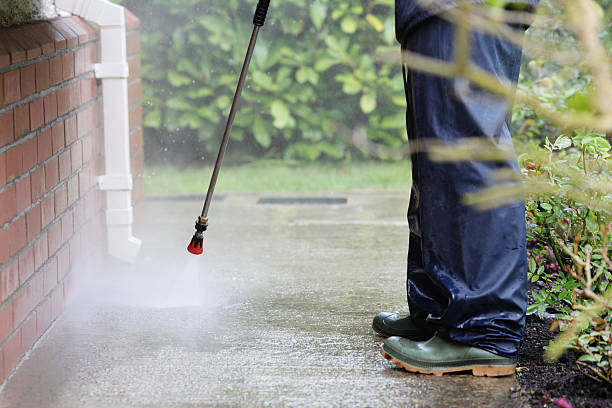Maintaining and Cleaning Polished Concrete Driveways

To keep your polished concrete driveway looking its best, it's important to incorporate regular maintenance into your routine. By following these simple steps, you can prevent debris buildup and maintain the polished surface:
Sweeping and Dusting: Regularly sweep the driveway to remove loose dirt, leaves, and debris. Dusting with a microfiber mop can help remove fine particles and keep the surface clean.
Removing Debris and Stains: Promptly remove any debris, such as branches or leaves, to prevent staining and potential surface damage. For stains, use a pH-neutral cleaner and a soft-bristle brush to gently scrub the affected area.
Preventing Weed Growth: Keep an eye out for any weed growth along the edges or cracks of the polished concrete driveway. Regularly remove weeds manually or use an appropriate weed killer to prevent them from taking root and causing damage.
Proper cleaning techniques play a crucial role in maintaining the polished appearance of your concrete driveway. Here are some key points to consider:
Basic Cleaning Steps: Start by rinsing the driveway with water to remove loose dirt. Then, use a mild pH-neutral cleaner and a soft-bristle brush or mop to clean the surface. Avoid harsh chemicals or abrasive tools that could damage the polished finish.
Choosing the Right Cleaning Products: Select cleaning products specifically formulated for polished concrete surfaces. Avoid acidic or abrasive cleaners that can etch or scratch the surface. Always follow the manufacturer's instructions for optimal results.
Pressure Washing Dos and Don'ts: While pressure washing can be effective for deep cleaning, it's important to use it with caution. Use a low-pressure setting and maintain a safe distance from the surface to prevent any damage. Additionally, avoid using hot water as it can cause thermal shock to the concrete.
Stains on polished concrete driveways can be unsightly, but with the right techniques, they can be effectively removed. Here's how to tackle common stains:
Oil, Grease, and Tire Marks: Absorb fresh oil or grease stains with a cat litter or an absorbent material. Once absorbed, gently scrub the area with a pH-neutral cleaner and rinse thoroughly. For older stains, specialised concrete degreasers can be used following the manufacturer's instructions.
Rust, Paint, and Stubborn Stains: Rust stains can be treated with a mild acid-based cleaner or a rust remover specifically designed for concrete surfaces. Paint stains may require paint removers or scraping techniques, taking care not to damage the polished surface. Always test any product in an inconspicuous area before applying it to the entire stain.
Sealing your polished concrete driveway provides an additional layer of protection against stains and wear. Consider these points when it comes to sealing:
Benefits of Sealing: Sealing the polished concrete surface helps enhance its durability, resistance to stains, and overall longevity. It also adds a subtle sheen and makes future cleaning easier.
Types of Sealers and Protective Coatings: There are various sealers and coatings available, such as acrylic sealers, penetrating sealers, or epoxy coatings. Consult with a professional to determine the most suitable option for your polished concrete driveway based on factors like climate and desired appearance.
Application and Maintenance of Sealers
Follow these steps for proper sealer application and maintenance:
Clean the Surface: Before applying the sealer, ensure that the polished concrete driveway is clean and free of any dirt, stains, or debris.
Apply the Sealer: Follow the manufacturer's instructions for the specific sealer you're using. Use a sprayer, roller, or brush to evenly apply the sealer to the surface. Take care not to over apply, as it can lead to a hazy or uneven appearance.
Allow Drying and Cure Time: Allow the sealer to dry and cure according to the manufacturer's instructions. This may involve keeping the driveway off-limits to foot and vehicle traffic for a certain period.

During the winter months, your polished concrete driveway requires additional care to withstand the harsh weather conditions. Consider the following tips for winter maintenance:
Preparing the Driveway: Before the onset of winter, remove any leaves, debris, or loose particles from the surface. Fill any cracks or gaps to prevent water from seeping in and causing damage.
Dealing with Ice and Snow Removal: Use non-abrasive ice melt products specifically designed for concrete surfaces. Avoid using metal shovels or sharp tools that can scratch the polished finish. Opt for plastic shovels or snow blowers to clear snow without causing damage.
Preventing Damage from De-icing Chemicals: While deicing chemicals can be effective, they can also cause damage to polished concrete surfaces. Minimise their use and promptly rinse the driveway after winter to remove any residual chemicals.

Regular Inspections and Repairs: Routinely inspect the driveway for any cracks, chips, or signs of damage. Address them promptly to prevent further deterioration and maintain the polished appearance.
Avoiding Common Mistakes: Do not use harsh chemicals, acidic cleaners, or abrasive tools that can damage the polished surface. Additionally, avoid dragging heavy objects or using sharp objects that can leave scratches.
Professional Maintenance and Re-polishing: Periodically consult with professionals who specialise in polished concrete maintenance. They can provide specialised cleaning, repairs, and re-polishing services to restore the shine and lustre of your driveway.
Maintaining and cleaning polished concrete driveways is essential to preserve their beauty and longevity. By following regular maintenance routines, utilising proper cleaning techniques, and considering additional protective measures like sealing, your polished concrete driveway will continue to enhance the curb appeal of your home for years to come. Remember, regular care and attention will keep your polished concrete driveway looking stunning and in top condition.
Post Your Ad Here
Comments